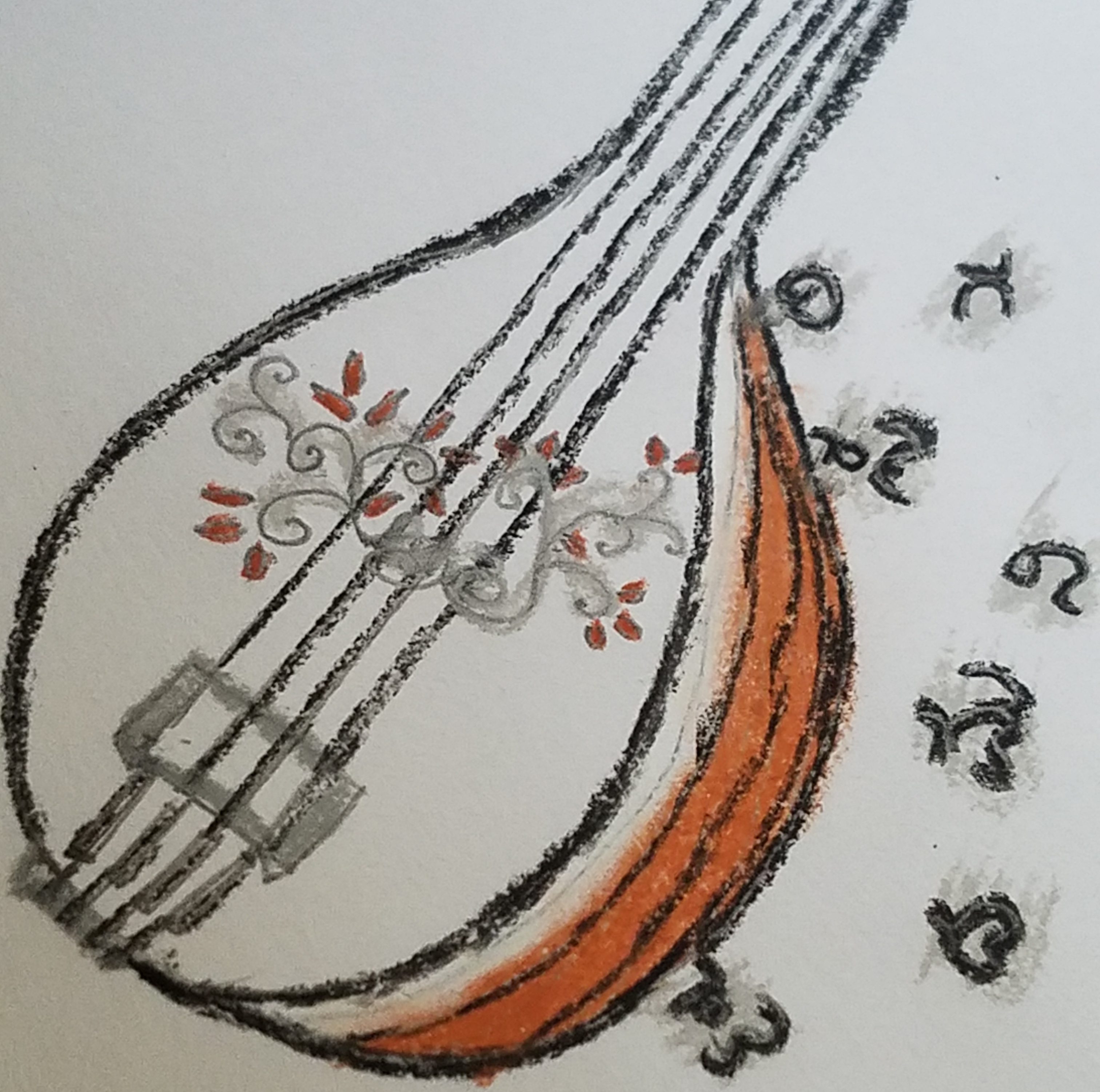Sangeeta is defined as ‘Samyak Geetam sangeetam‘ – a melodious tone and is mostly practiced in southern parts of India. It’s known that practicing music improvises the concentration level, thinking capability , grasping power and intellect. Overall, Shatriya sangeeta can transport a man from mortal state to a divine state.
There are 7 swara’s (series on musical note) , called “Sapta Swaras” , viz Sa, Ri, Ga, Ma, Pa, Da, Ni . These swara’s have their own naming conventions :
Sa – Shadja
Ri – Rishabha
Ga – Gandhara
Ma – Madhyama
Pa – Panchama
Da – Daiwata
Ni – Nishada
Sa and Pa swara’s remain constant ie they are unalterable and are called “Prakruti Swara’s“, whereas swara’s like Ri, Ga, Ma, Da, Ni varies and are called as “Vikruti swara’s“.These Vikruti Swara’s have different flavors called the “Swarasthana“.
|
Ri |
Ga | Ma | Da |
Ni |
| Shudha Rishabha (Ri 1) | Shudha Gandhara (Ga 1) | Shudha Madhyama (Ma 1) | Shudha Daivata (Da 1) | Shudha Nishada (Ni 1) |
| Chaturshruthi Rishabha (Ri 2) | Sadharana Gandhara (Ga 2) | Prati Madhyama (Ma 2) | Chaturshruthi Daivata (Da 2) | Kaishiki Nishada ( Ni 2) |
| Shatshruthi Rishabha (Ri 3) | Antara Gandhara (Ga 3) | Shatshruthi Daivata ( Da 3) | Kaakali Nishada (Ni 3) |
The main instrument used in shatriya sangeeta is “Tamburi” which assists the singer by setting the tone .
An electronic Shruthi box is used as an alternative to Tamburi . Now a days, various applications exists like ‘Shruti Box’ , ‘YakshaShruti’ etc which can be installed in your phone.
What is Raga?
A structure of swara’s forming a musical framework . It divided into two categories :
- Janaka Raga – Here, we can see all 7 swaras (Sapta swara’s) aligned in order in both Arohana and Avarohana. There are 72 Janaka Raga’s. Janaka raga is also called ‘Sampurna Raga‘, ‘Raganga Raga‘. It is a parent raga.
- Janya Raga – Raga that is derived from Janaka raga or from the parent raga is called janya raga. Here, Swara’s may not be arranged in order and may have 1 or 2 swara’s eliminated. Janya raga is divided into two categories: ‘Upanga Raga‘ and ‘Bhashanga Raga‘
In order to introduce the raga, we express it by singing ‘Arohana‘ and ‘Avarohana‘.
- Arohana – Increasing order of swara’s . Eg: Sa Ri Ga Ma Pa Da Ni
- Avarohana – Decreasing order of swara’s. Eg : Ni Da Pa Ma Ga Ri Sa
What does Tala mean?
Rhythmic beat or a structure of beats that guide the singers to maintain the tempo throughout the song. There are 7 of them and is called “Suladi Sapta Tala“. Our hand is used as an ‘Anga’ to represent it.
Stokes of the Anga are as follows:
- Laghu – One beat with palm facing down followed by counting with fingers starting with little finger. It is represented by ‘I‘.
- Druta – One beat with palm facing down followed by palm facing upwards . It is represented by ‘0‘.
- Anudruta – One beat with palm facing downwards. It is represented by ‘U‘.
We need to always start by adjusting our tone with the Shruthi Box
Once you are done knowing about ‘Things to know’, go to ‘Saralevarase‘ lesson


Thank you. I am happy that it is helping you !
LikeLike